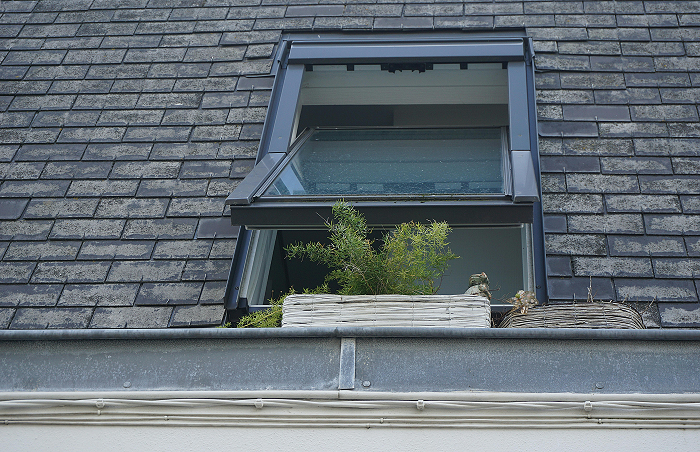Addressing Poor Ventilation: Combat Heat Buildup, Mold, and High Energy Costs
By Wilma Haskins · Jul 25, 2025

Poor ventilation can pose a significant challenge for homeowners, leading to issues such as heat buildup, mold growth, and increased energy costs. Addressing these problems promptly can prevent further damage and improve your home's comfort and efficiency. Often, poor attic ventilation is at the root of these concerns, causing high energy bills and mold from roof issues. Through this guide, we will explore the causes, indicators, and solutions for poor ventilation. Whether dealing with insulation problems or seeking professional help, this article will provide comprehensive insights to help you manage and rectify poor ventilation in your home.
Understanding Poor Ventilation and Its Effects
The Impact of Poor Ventilation
Inadequate ventilation primarily leads to heat buildup inside your home, which over time can become a stubborn and costly problem to tackle. The heat that accumulates in poorly ventilated spaces raises indoor temperatures, placing added stress on cooling systems and inflating energy bills. Moreover, persistent heat and humidity can foster mold growth, resulting in health hazards and structural damage.
Causes of Poor Ventilation
Several factors contribute to poor ventilation, including:
- Inadequate attic ventilation: Poor attic ventilation is a common culprit, hindering airflow and causing trapped heat.
- Insulation problems: Improper insulation can exacerbate ventilation issues, trapping air and moisture.
- Blocked vents: Obstructions in vents can severely reduce airflow.
- Roof design flaws: Some roof structures may inherently lack sufficient ventilation features.
Addressing Poor Attic Ventilation
Why Attic Ventilation is Crucial
Attic ventilation plays a pivotal role in the overall health of your home. It facilitates the proper exchange of air, ensuring that hot air escapes and cooler air circulates. Without adequate ventilation, attics can become breeding grounds for heat and moisture, leading to mold from roof issues and high energy bills.
Solutions for Improving Attic Ventilation
- Install Vents: Consider installing ridge vents and soffit vents to promote balanced airflow.
- Upgrade Insulation: Ensure your attic insulation is up to standard to prevent heat retention and improve airflow.
- Use Attic Fans: Attic fans can aid in expelling hot air, especially in areas where natural ventilation is insufficient.
Identifying Insulation Problems
Signs of Insulation Issues
Poor insulation often goes hand-in-hand with poor ventilation. Here are some indicators that your home may have insulation problems:
- Uneven temperatures: If some rooms are significantly hotter or cooler than others, insulation could be lacking.
- High energy bills: Elevated energy costs often signal that your home is not energy-efficient.
- Drafts: Feeling drafts in certain areas indicates gaps in insulation.
Addressing Insulation Problems
- Conduct an Energy Audit: An energy audit can pinpoint specific areas where insulation is inadequate.
- Upgrade Insulation Materials: Modern insulation materials, such as spray foam or rigid foam, offer improved performance over traditional options.
- Seal Gaps: Ensure that all openings around windows, doors, and ducts are thoroughly sealed.
Solving Mold Issues Arising from Roof Problems
The Link Between Roof Issues and Mold
Poor attic ventilation and insulation problems can lead to moisture accumulation, fostering mold growth. Mold not only damages your property but also poses severe health risks.
Steps to Combat Mold
- Improve Ventilation: As previously mentioned, enhancing attic ventilation will facilitate better moisture control.
- Roof Repairs: Address any roof leaks or structural issues promptly to prevent water intrusion.
- Use Dehumidifiers: In high-humidity areas, dehumidifiers can assist in maintaining an optimal moisture level.
Evaluating Costs and Benefits
Short-term vs. Long-term Costs
While addressing poor ventilation and insulation issues may involve upfront costs, the long-term benefits far outweigh these initial expenses. Improved ventilation and insulation contribute to energy savings, reduced mold risks, and enhanced comfort.
Professional Help vs. DIY Solutions
When to Consider Professional Help
Though some ventilation and insulation improvements can be tackled independently, certain scenarios necessitate professional expertise. Complex issues like roof repair, significant insulation upgrades, or mold remediation often require the skills of trained professionals.
Hire a Contractor via HouzTask.com
For extensive projects, it's crucial to select a reliable professional contractor. HouzTask.com offers a seamless platform to connect with skilled professionals.
Importance of Contractor Evaluation
- Get Multiple Quotes: Obtain several estimates to understand market rates and ensure competitive pricing.
- Check Credentials: Verify licenses, insurance, and past client reviews.
- Communicate Clearly: Establish clear expectations and timelines to avoid misunderstandings.
Conclusion
Poor ventilation can lead to numerous issues, including heat buildup, mold growth, and inflated energy costs. By understanding the causes and solutions, homeowners can take proactive steps to enhance their living conditions. For complex problems or to ensure thorough improvements, consider hiring a professional through HouzTask.com. With dedicated services available, you can find the right experts to address your home's ventilation and insulation needs effectively.
For personalized guidance or if you need to find a professional, visit [HouzTask AI](https://houztask.com/ai/pro-search/find-a-pro/) to ask questions or [Find a Pro](https://houztask.com/ai/pro-search/find-a-pro/).
Need help?
Let HouzTask help you diagnose the issue or connect with a trusted local pro — in minutes.
Get Started with HouzTask